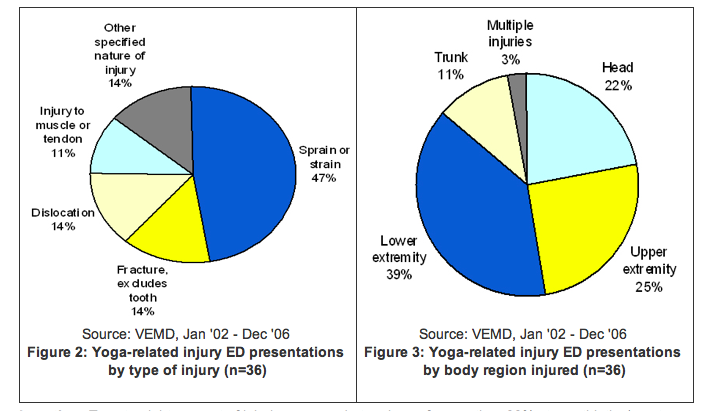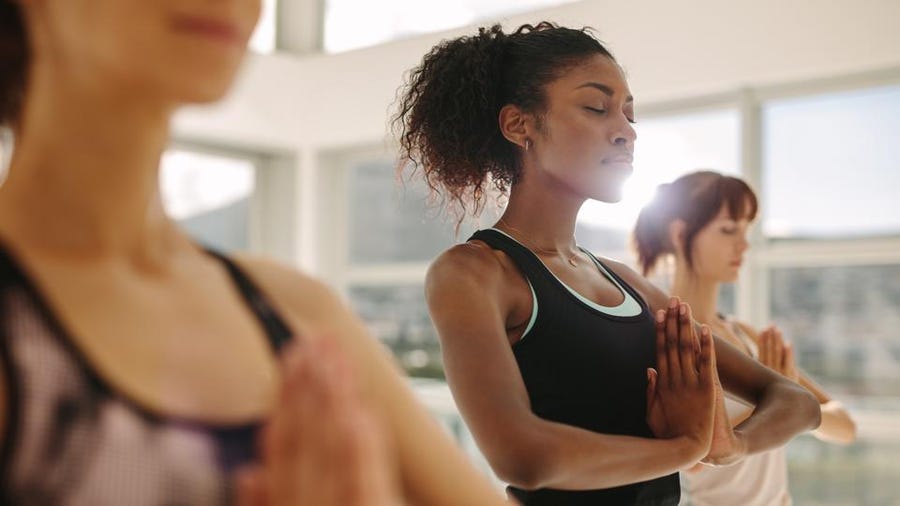
Constipation yoga has many benefits, but they don't just relieve abdominal pain. This is a simple but effective twisting position that stimulates your digestive system and stretches your abdominal muscles. In addition to improving your bowel movement, this yoga pose can also relieve the symptoms of periods and bloating. Here are some effective yoga poses that can help with constipation.
Cat-cow pose: This yoga pose works to stimulate the abdominal region by activating core muscles, while simultaneously stimulating the movement of the midsection. The belly must be exhaled to help the intestines move. This is known to push the poop buttons. This pose can be combined with a healthy diet as well as plenty of sleep. It will alleviate constipation symptoms.
Crescent Lunge Twist (or Crescent Twist): This pose requires twisting your body. This pose is great for beginners because it doesn't require much twisting. It can also ease constipation-related gas. Wind-Relieving pose: This yoga position is great for people who are suffering from constipation. It's a good inversion and can help relieve gas. This is a great pose for beginners.

Crescent Lunge: This basic yoga pose stimulates the digestive tract and blood flow to the internal organs, as well as stretching the entire GI tract. To do the Crescent Lunge, stand on your hands and knees with your palms facing forward. Keep your right knee pressed against your chest. Continue to extend your arms, legs, and chest. Tuck your stomach toward your navel. Repeat the process on the opposite side. This pose will strengthen the abdominal muscles and bowels.
Wind-Relieving Poses: This asana of yoga is great for constipation. This exercise strengthens the abdominal muscles and releases excess gas and acid. It is one of the most advanced asanas, so it's important to be careful while doing it. This pose is not recommended for beginners. It is possible to slow down, and then increase the speed if you aren’t confident.
Yoga can help with digestion, stress reduction, and constipation. Yoga can help you regulate your body's release of chemicals. For example, the majority of serotonin in our bodies is produced by the gut. Strengthening the parasympathetic nerve system will help to balance cortisol and serotonin.
The universal spinal twist aligns the spine and the abdominal organs, and prevents gastritis and indigestion. It can help to reduce belly weight. These benefits are not the only ones. This yoga asana is also great for constipation relief. It is one the most well-known supine yoga poses for constipation. It is especially useful for people suffering from high bloodpressure or other medical conditions.

Constipation yoga is not the only treatment. There are many other methods to deal with this condition. Walking and drinking warm water are excellent ways to reduce stress levels and improve your digestive system. A healthy diet can help eliminate constipation and improve your digestive health. For a better posture and pain relief, you might also consider a gentle, seated down dog pose. This posture is especially useful for chronic constipation sufferers.
While many of the benefits of constipation yoga are well-known, it's also worth trying yoga for the symptoms associated with it. These tips will help you pass stool easily and without discomfort. So, don't delay. Take a positive attitude, and try this pose right away!
Yins and Anti Constipation - Learn the Many Benefits to Doing Standing Poses
Ardha Matsyendrasana also known by needle pose helps to massage the digestive system. This pose aids in digestion and detox. It's also very effective for treating constipation. You can also sit for five to seven minute increments if you're not able to sit. Take a deep breath before you begin to focus on the pose.
FAQ
Are There Any Benefits Of Doing Yoga?
Yoga has been around since ancient times, and it has recently gained popularity. It is now very popular among celebrities and even ordinary people who want to look fit and healthy.
Yoga is great for strengthening and stretching your muscles. It calms you down and relaxes you.
Yoga is more focused on breathing than other forms of exercise.
You can practice various poses to improve your flexibility and balance.
How to build muscles quickly
The best way to quickly build muscle is to eat healthy and exercise regularly.
It is best to exercise in the morning, when you feel fresh and ready to go!
Exercises such as push-ups and bench presses are good options.
Take a look at different weight training options and make sure to drink plenty of fluids throughout the day.
Is Cardio Better Than Strength Training?
Both are equally great. For those who want to gain muscle quicker, cardio is a better choice.
Cardio burns a lot more calories per minute that strength training and is more effective at burning fat.
Strength training increases muscle mass but takes more time than cardio.
Is weightlifting more effective at burning fat?
Although weight lifting can help you lose fat more quickly, it is best to combine it with cardio exercises.
You should do weightlifting after your cardio workouts to maximize its benefits.
If done correctly weightlifting can raise your heart rate, oxygen consumption and help you lose weight.
You will not notice any changes in your body composition if you don’t combine it and cardio.
How often should I exercise each week?
It all depends on how much time and what kind of exercise you like. You should do moderate-intensity aerobic exercise three to five days per week. It is important not to overdo it. Consistent exercise is essential to achieving maximum benefit from your workouts.
Which exercises work best for you?
It all depends upon your fitness goals. Some people prefer endurance sports like swimming, cycling, or running. Some people enjoy lifting weights and using resistance bands. There are many exercise programs on the market today. Select the one that best suits your needs.
Statistics
- An estimated calorie range for moderately active adult males falls between 2,200 to 2,800 calories per day, depending on age. (eatright.org)
- Candidates and applicants must pass all four tests at 70% (minimum level) to graduate from Basic Deputy U.S. Marshal (BDUSM) Training. (usmarshals.gov)
- Cardmembers earn 5% Back at Amazon.com with a Prime Credit Card. (amazon.com)
- According to the American Academy of Dermatology (AAD), men over 50 are at a heightened risk of developing it. (healthline.com)
- Get free shipping and 25% off today. (healthline.com)
External Links
How To
How can I exercise to burn fat?
Exercise reduces calories by increasing metabolism, and oxygen consumption.
Moderate intensity exercise is a safe way to lose weight.
These tips will help you burn fat and keep fit while exercising.
-
Cardio exercises like walking, running (or jogging), swimming, cycling, running, and/or elliptical training are all good options.
-
You can exercise for 30 mins three times per week.
-
Add strength training to your workouts if you are looking to lose more weight.
-
Avoid intense exercise. It is possible to build muscle without destroying muscle tissue.
-
During exercise, drink plenty of water. Water flushes out toxins and helps keep the body hydrated.
-
After working out, drink low-fat protein shakes. Protein shakes repair muscles and increase energy.
-
So you don’t feel hungry, eat smaller meals throughout your day.
-
Don't skip breakfast! Skipping breakfast can make you tired and sluggish.
-
Take care of yourself mentally. Stressful situations can slow metabolism.
-
Keep a positive attitude. Studies show that people who believe they're overweight gain more weight than those who think they look pleasing.
-
Get enough rest. You will have a harder time losing weight if you do not get enough sleep.
-
Active living is key. Be sure to get up and move around every hour or two.
-
Maintain a healthy diet. Eat right to feel satisfied and full for longer.
-
Find relaxation methods. Relaxing doesn't mean your body releases stress hormones which cause muscle tissue to be destroyed.
A balanced diet includes all essential nutrients needed for growth and development.
Six small meals per day is better than three large meals. This gives your body more time to digest the food you eat.
Calcium is required to support strong bones. Calcium is available in dairy products like milk, yogurt, fortified soy beverages, orange juice, cereal, bread, and cereals.
Calcium is found in green leafy vegetables, beans, tofu, seeds, nuts, and cheese.
Vitamin D is necessary for the body to absorb calcium. Vitamin D is found in eggs yolk, fatty fish and fortified foods.
Vitamin E is crucial for skin health. Vitamin E can also be found in vegetable oil, wheat germ oils, peanuts as well almonds, sunflower seeds and corn.
Your body needs zinc to maintain normal immune function and heal wounds. Zinc is found in seafood, oysters legumes meats, whole grains, whole grains and meats.
Zinc deficiencies can lead to fatigue, decreased appetite, depression, and reduced immunity.
Too much sugar leads to insulin resistance. This results in higher blood glucose levels. Insulin resistance is linked to weight gain.
Insulin resistance occurs when the bloodstream is full of free radicals. Free radicals can be molecules with unpaired electrons that cause damage to cell membranes.
Food additives, pesticides and herbicides, as well as preservatives, smoking and radiation are all sources of free radicals.
Free radical damage may lead to cancer, heart disease diabetes, arthritis, asthma and other conditions.
A well-balanced diet rich in antioxidants is the best way for you to avoid free radical damage. Antioxidants protect against oxidative damage.
Vitamin C is found in citrus fruits and beta carotene is found in carrots.
Selenium, manganese (and zinc) are other antioxidant nutrients.
Selenium helps to protect cells against free radicals and oxidative stress. Selenium is also found in Brazil nuts.
Copper protects eyes, brain, lungs and red cells. Copper can be found in shellfish and poultry as well as meat and organ meats.
Manganese, an essential component of bone strength, is crucial. Manganese can be found in brown rice and spinach as well as bananas, prunes raisins, oatmeal, lentils, and oatmeal.
Zinc is necessary for average growth, reproduction, and wound healing. Zn is found in lean cuts of meat, white fish, poultry, and eggs.